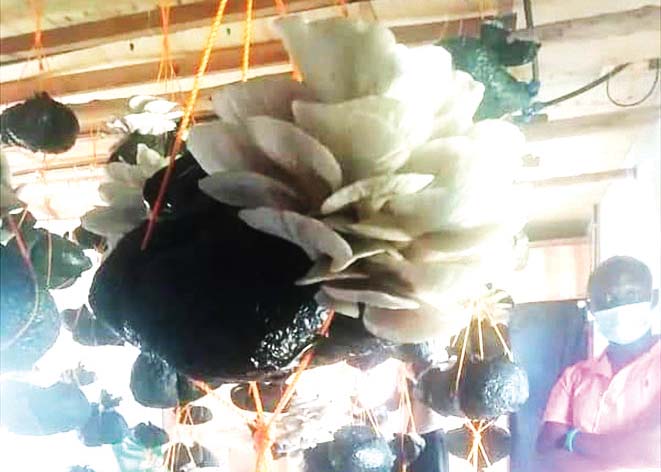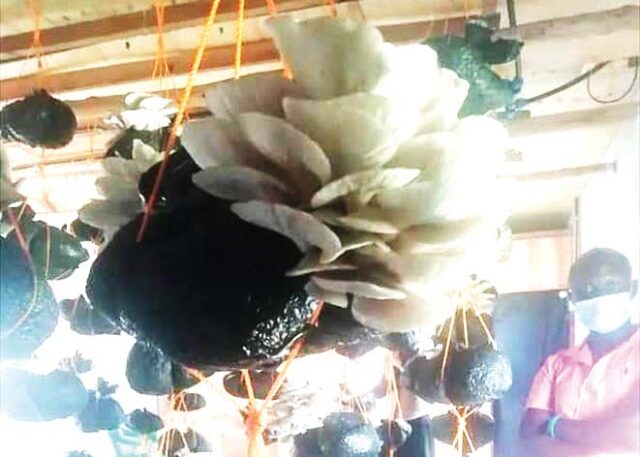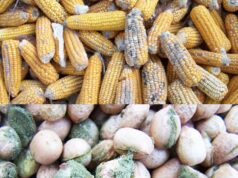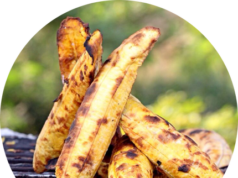By Beatrice Nakibuuka
Mushroom growing has become a craze because of their increased nutritive demand.
Many people may wonder how possible it is to grow them at home. But Merab Manige, a farmer, says you do not need a big piece of land. In most cases, you may require just a simple structure.
Mushrooms grow indoors and, therefore, one needs space for a temporary or permanent structure depending on their investment.
According to Manige, you will need compost substrate, which provides nutrients needed for mushrooms to grow.
“These can be from industrial or agricultural waste. The most commonly used substrate are the cotton husks, because of their high carbon to nitrogen ratio that is favorable for the growing of the mushrooms,” she says.
Manige says the cotton tusks are costly, and therefore advises people to use the readily available material such as coffee husks, soybean husks, groundnut shells, dry banana leaves, dry paspalum, rice straws, and saw dust from non-timber trees. Once you have these as your substrate, you can mix a little cotton husks.
Other requirements include water, sanitizer or jik for disinfecting, maize bran and lime. You also need firewood and a clean tarpaulin.

Planting process
1. Soak the substrate in a drum for about 24 hours to moisten it and allow the micro-organisms that may be in the substrate to come to the surface for easy sterilization.
2. Drain the water out of the drum. The draining process may take up to three hours. To measure the amount of moisture, the water should not be dripping, but your hands should remain moist.
3. Pour out the substrate on a tarpaulin. For a bag of the substrate (35 to 50kg), add 2kg of lime to balance the PH to alkaline and 4kg of maize bran to add a little fertilizer and mix thoroughly. For better results, you can cover this mixture and let it ferment for over a day to help it mix very well.
4. Pack the substrate in sizes of polythene bags of your choice for the steam sterilization process and cook for four hours (the same way you would steam matooke). This is necessary to kill any insects, nematodes, fungi, or other pests that may be present in the compost.
5. Allow the substrate to cool and then disinfect everywhere using jik or a sanitizer to reduce the risk of infection.
Spawning process
The spawning process is another sensitive one where the spawn (mushroom seed) is mixed with the substrate.
Pack the substrate in black polythene bags (gardens) and sprinkle some spawn on top, then tightly tie the polythene bag and put some holes. If you are using the tubes, they already have aeration holes.
A 250g packet of spawn costs Shs 3,000. These can be used in three black polythene gardens, six white tubes or one big bucket.
The gardens are then moved to special rooms, each designed to provide the optimum environment for each step of the mushroom growing process. These are incubated for 14 to 21 days to allow the mycelium to grow.
The quality of the substrate determines the quantity of the yields and not the amount of spawns.
After two weeks, Manige says you can transfer the gardens to a well-aerated growing room.
But before transfer, first layer the floor with charcoal dust and add sand on top. Put racks where the gardens are placed or hang.
While in the growing room, you need to sprinkle water in the charcoal dust and sand mixture to keep moisture for proper growth of mushrooms.
The mushrooms are ready for harvesting once they are fully blossoming and the caps turn from convex to concave – turning down to turning up.
Handling infections
Infections are usually common and can manifest when you see green patches. Cut off and isolate any green patches.
Dip a piece of cotton wool in a solution of highly concentrated salt and clean the patch, the infection will disappear with time.

Harvesting
If you are harvesting the mushrooms in the morning, avoid watering them the evening before, as they will be waterlogged and will not look appealing.
Freshly harvested mushrooms must be kept refrigerated at 35°F to 45°F. To prolong the shelf life of mushrooms, it is important that they “breathe” after harvest, so store in a non-waxed paper bag.
Manige says a kilogram of fresh mushrooms costs between shs 6,000 and shs 10,000, depending on your market. She adds that drying them first can earn you more money.
After the last lot of mushrooms has been picked, the growing room should be closed off and pasteurized with steam, to destroy any pests which may be present in the crop.






















